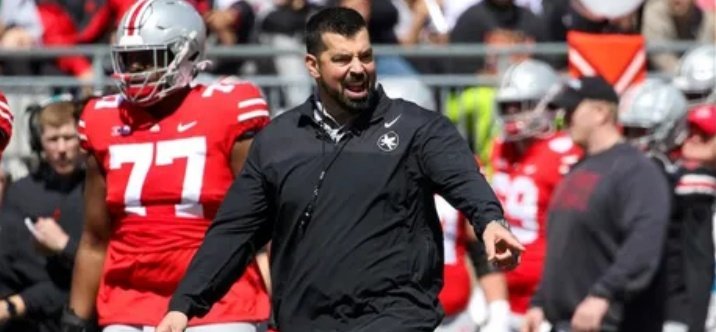Ryan Day isn’t ready to say exactly what Ohio State’s spring showcase will consist of yet, but he expects it to look different than past spring games.
Ohio State’s spring football game has long been a celebrated tradition, offering fans a first glimpse of the upcoming season’s talent and providing players with a platform to showcase their skills. Historically, these games have been grand events, with attendance records highlighting the immense support from Buckeye Nation. In 2016, for instance, over 100,000 fans filled Ohio Stadium, setting a national record for spring game attendance.
However, as the 2025 spring game approaches, head coach Ryan Day has indicated that significant changes are on the horizon. Reflecting on the team’s journey, especially after clinching the national championship with a 34-23 victory over Notre Dame, Day emphasized the need to adapt and evolve. “I don’t think it’s going to look the same as it’s looked in the past,” Day remarked, hinting at a departure from traditional formats.
One of the primary reasons for this shift is the expanded College Football Playoff (CFP) system. With the playoff field growing to 12 teams, programs like Ohio State are now navigating longer seasons, potentially playing up to 16 games. This extension has profound implications for player health, training regimens, and overall team strategy. The increased number of games necessitates a reevaluation of spring practices to ensure athletes are adequately prepared without risking overexertion.
In light of these developments, the traditional spring game format, which often pits the offense against the defense or divides the team into two squads, might be reimagined. The focus could shift towards controlled scrimmages, specialized drills, or situational play simulations. Such adjustments would allow coaches to assess player performance in specific contexts, prioritize skill development, and minimize injury risks.
Another factor influencing the change is the evolving landscape of college football, particularly with the introduction of Name, Image, and Likeness (NIL) policies and the transfer portal’s growing prominence. These elements have transformed team dynamics, with players having more mobility and opportunities than ever before. Ohio State has been proactive in this environment, leveraging NIL to retain top talent and actively engaging in the transfer portal to bolster its roster. These strategic moves underscore the importance of adaptability in both player development and team composition.
The coaching staff has also seen notable changes, with the recent addition of Matt Patricia as the defensive coordinator. Patricia, a seasoned NFL coach with three Super Bowl titles from his tenure with the New England Patriots, brings a wealth of experience to the Buckeyes. His NFL background is expected to influence the team’s defensive strategies, potentially introducing new schemes and training methodologies. Integrating Patricia’s approach will be a focal point during the spring sessions, further justifying a departure from traditional game formats to facilitate comprehensive implementation of his defensive vision.
Moreover, the extended season has prompted discussions about roster management and player workload. With the possibility of a 16-game schedule, maintaining player health and peak performance becomes paramount. The spring period offers an opportunity to evaluate depth, experiment with player rotations, and implement recovery protocols. Adjusting the spring game format allows the coaching staff to simulate various scenarios, ensuring that both starters and backups are adequately prepared for the rigors of a prolonged season.
While specific details of the new spring game format have yet to be unveiled, it’s evident that Ohio State is committed to innovation and excellence. By embracing change and prioritizing player development within the context of an evolving college football landscape, the Buckeyes aim to maintain their competitive edge. As fans eagerly await the upcoming season, they can anticipate a spring showcase that not only honors tradition but also reflects the program’s forwardthinking ethos.
In essence, the forthcoming changes to Ohio State’s spring game are a testament to the program’s resilience and adaptability. Under Ryan Day’s leadership, the Buckeyes are poised to navigate the challenges of modern college football, ensuring sustained success and a continued legacy of excellence.



